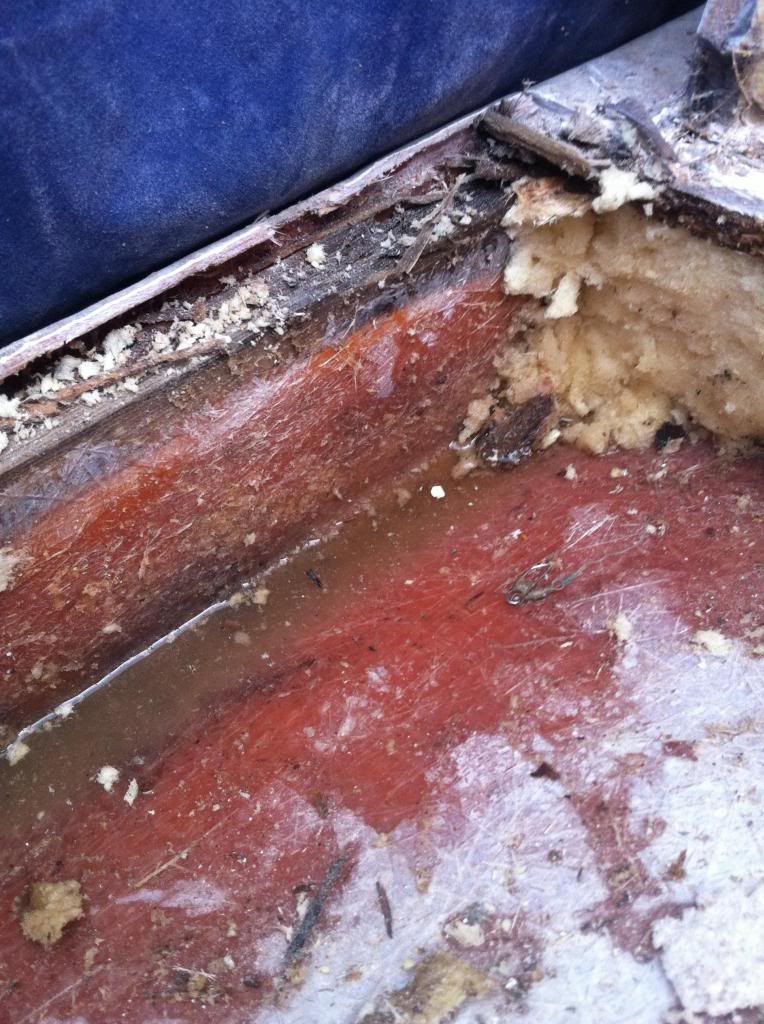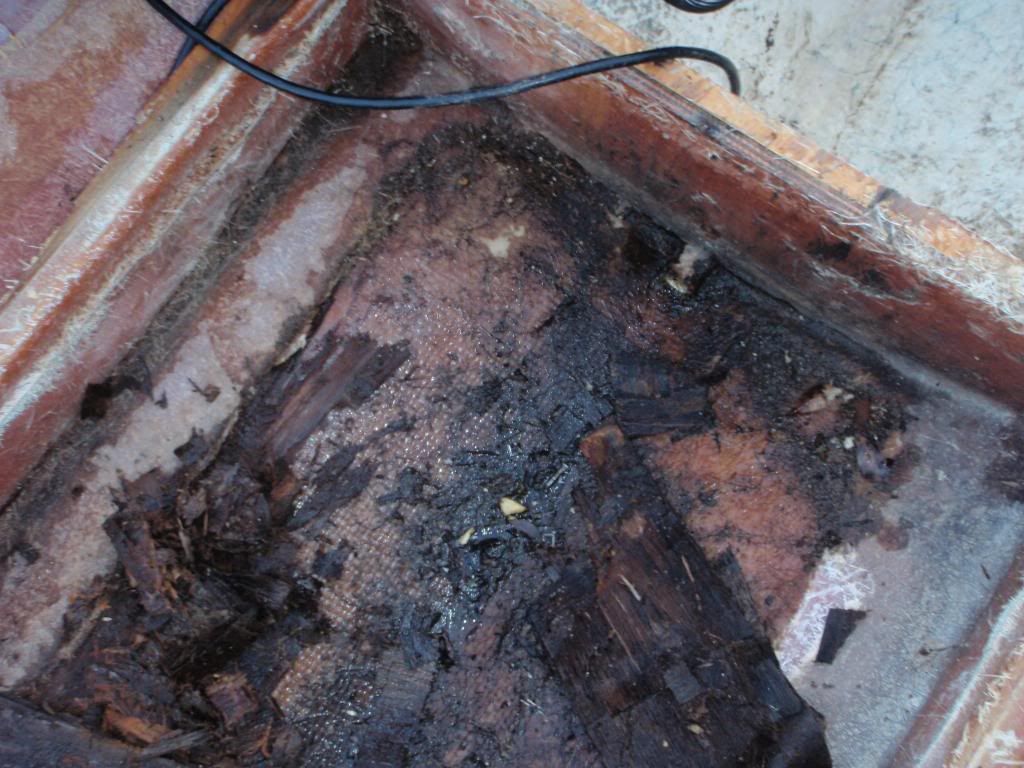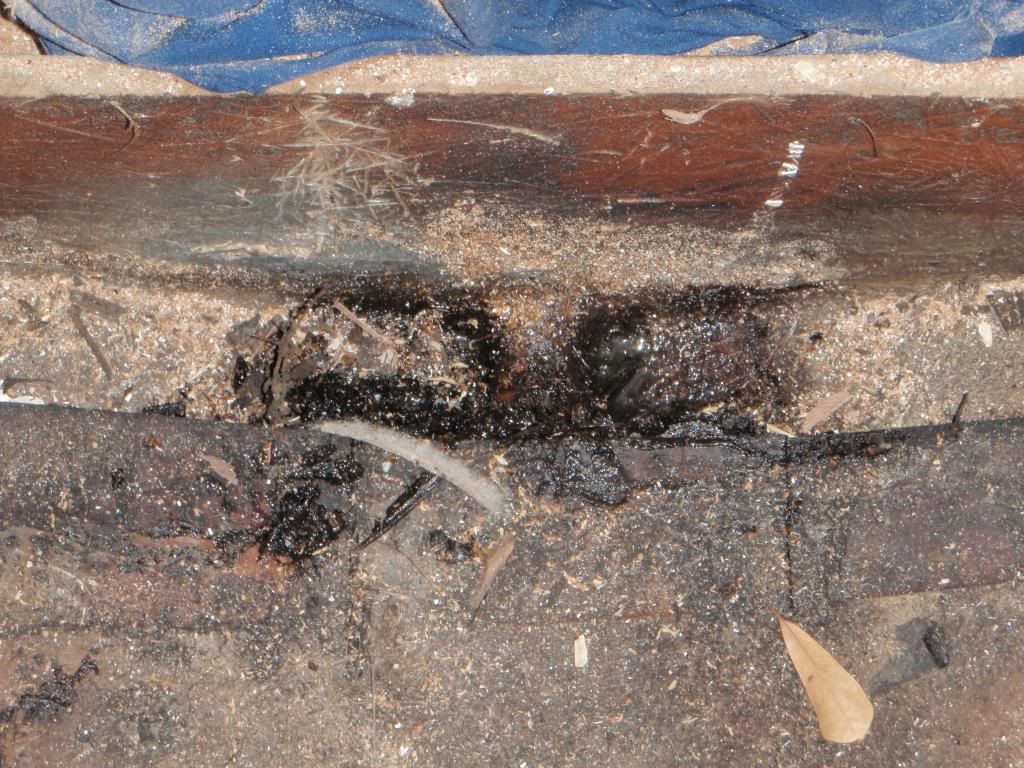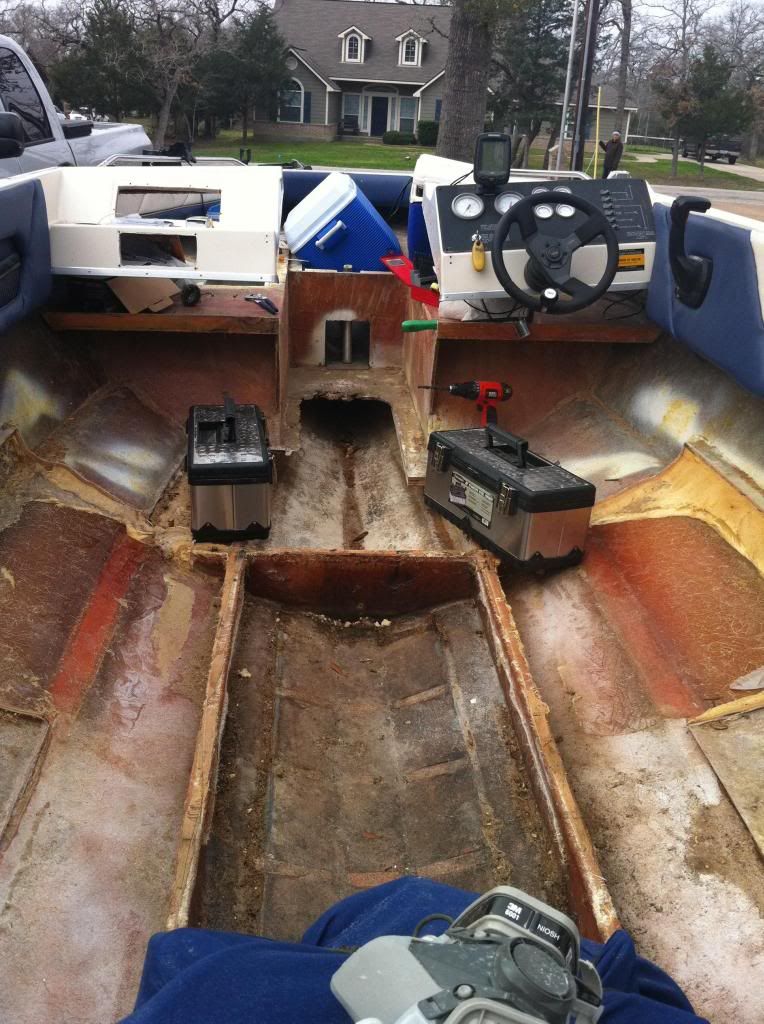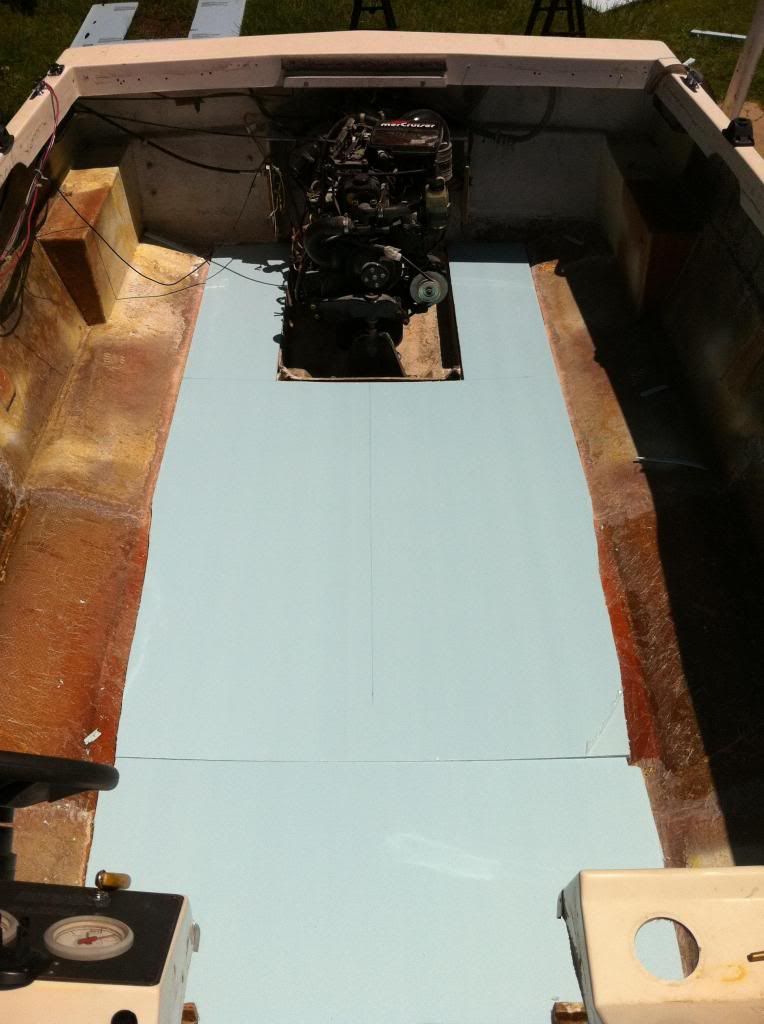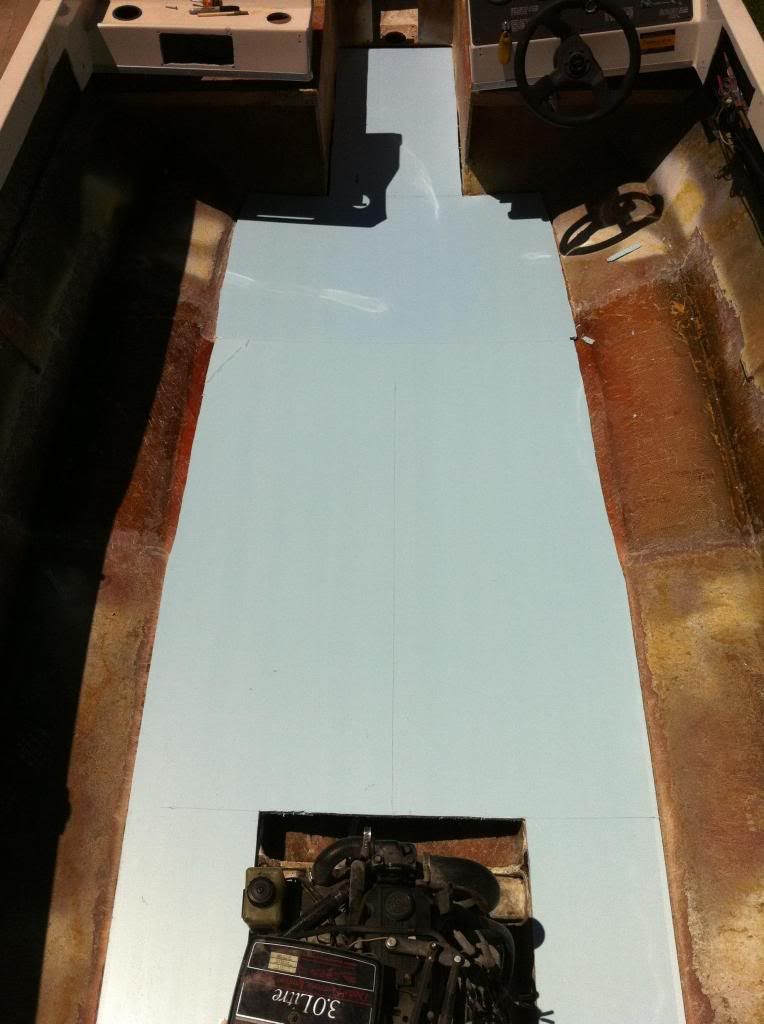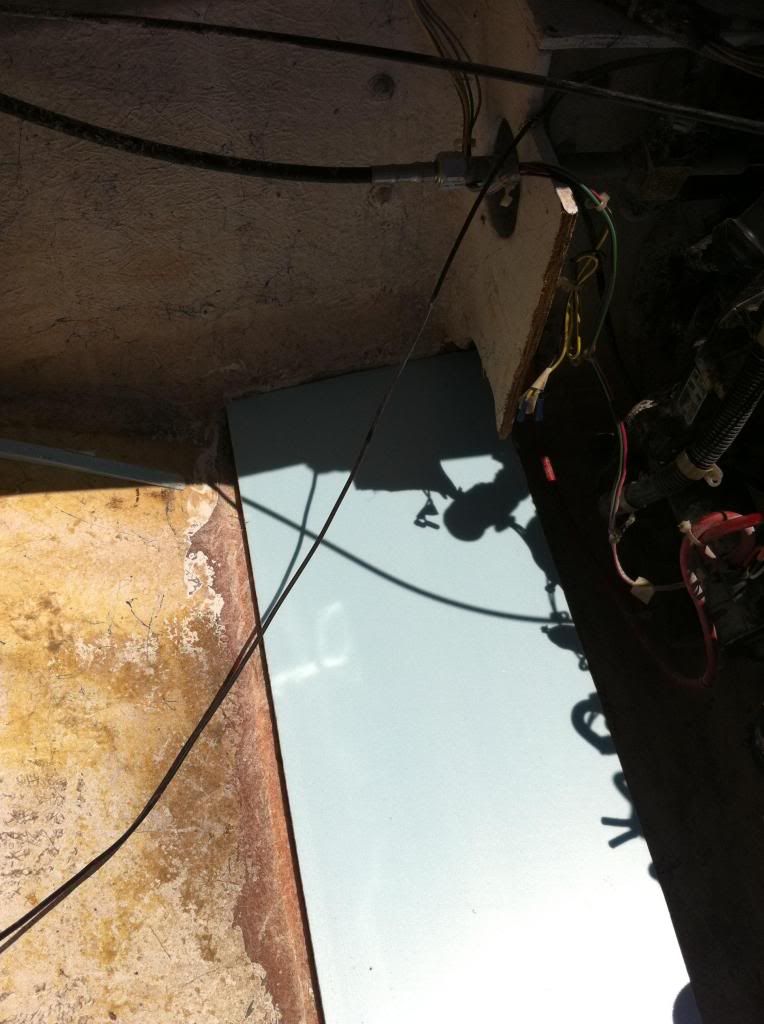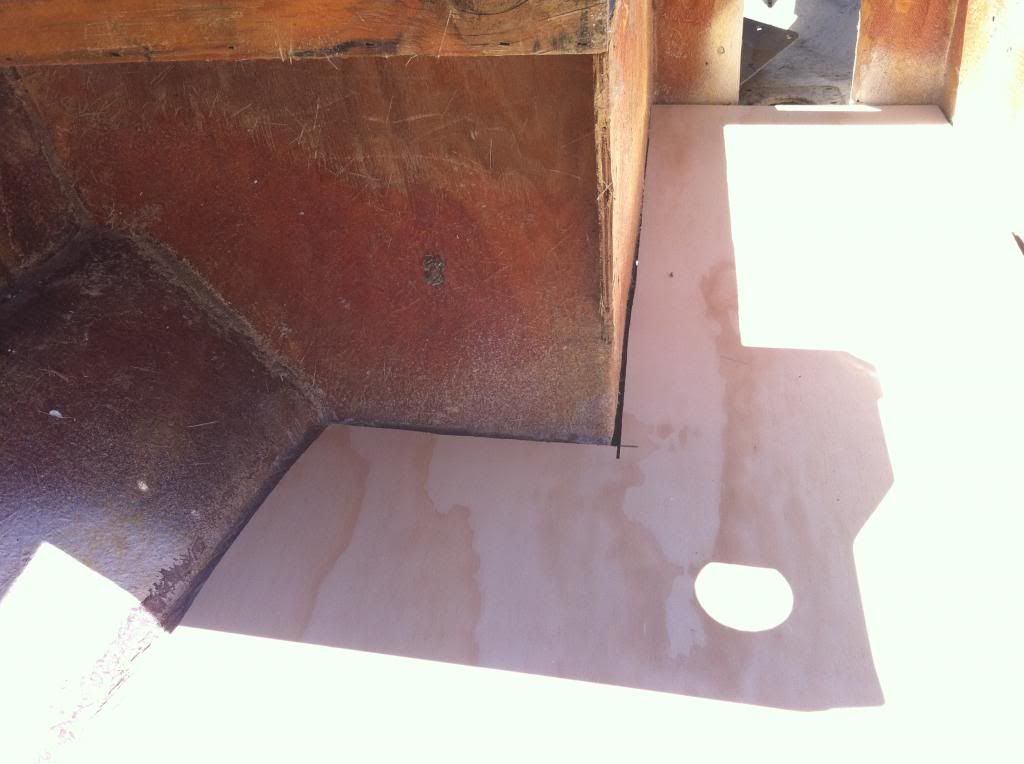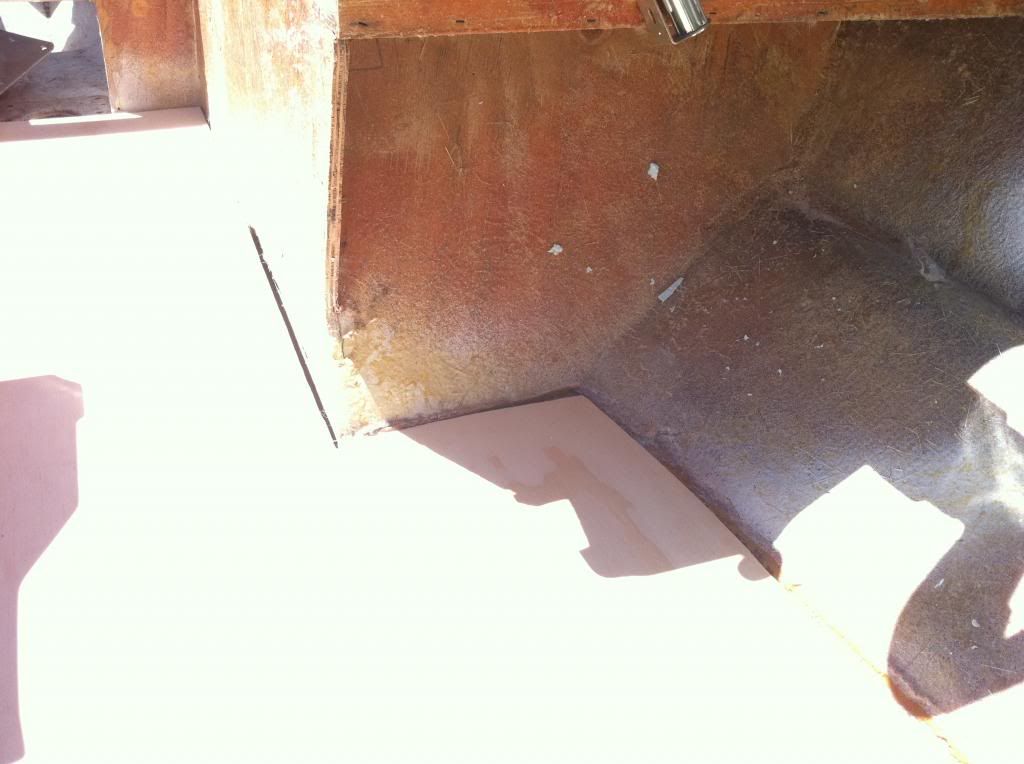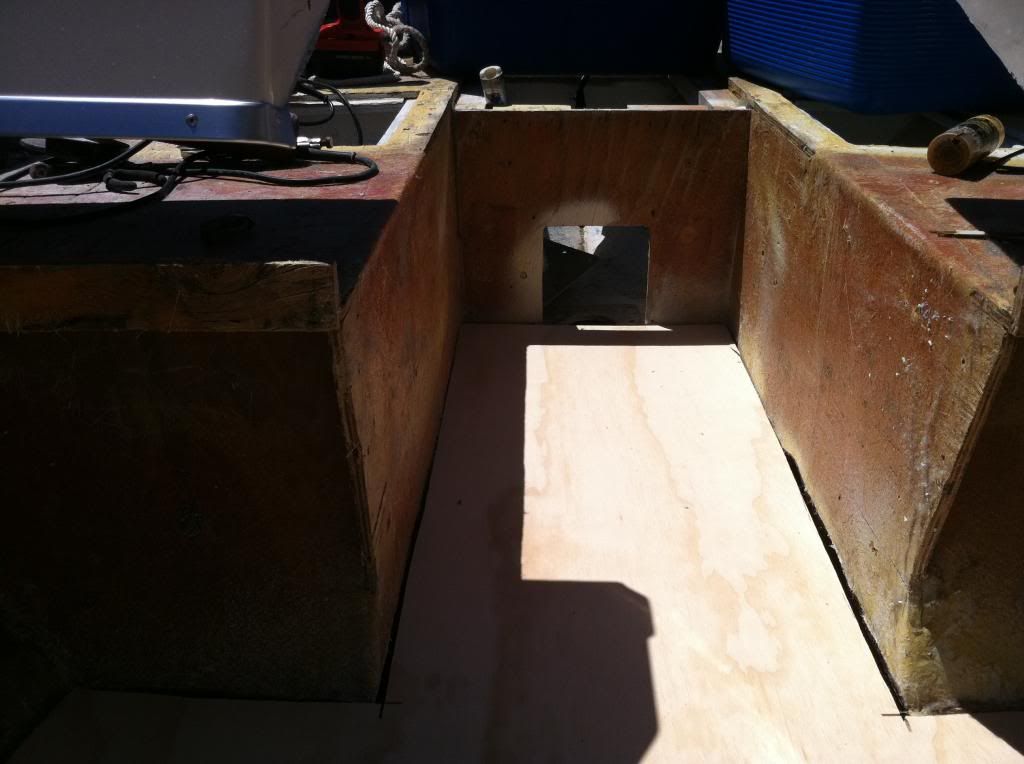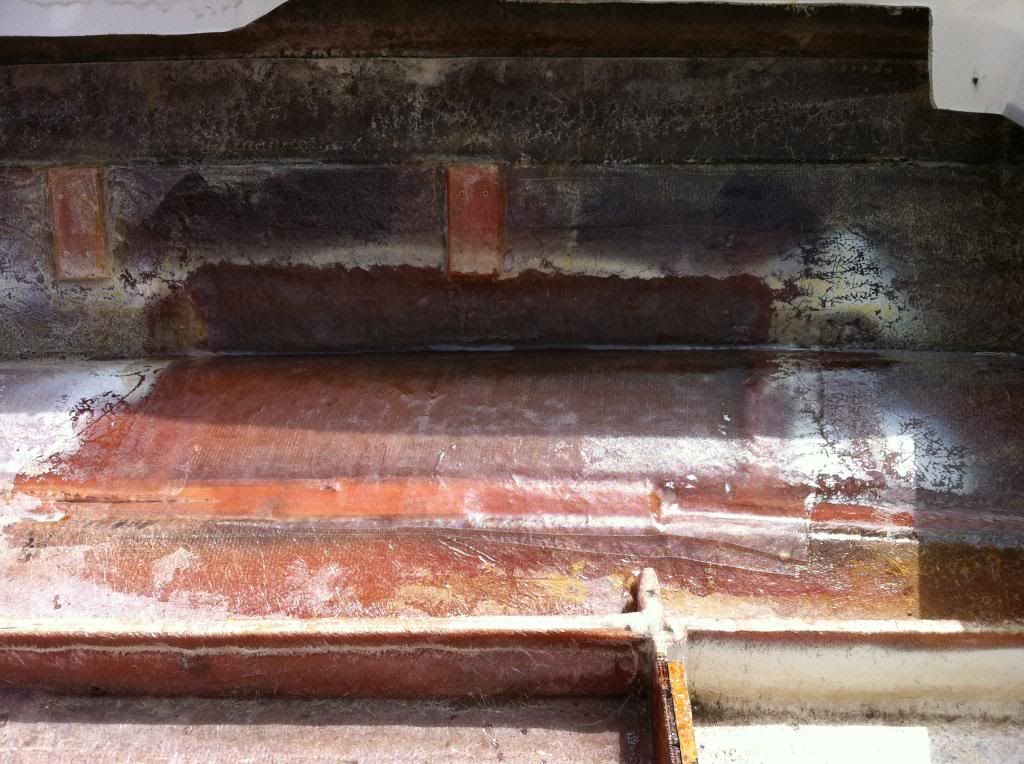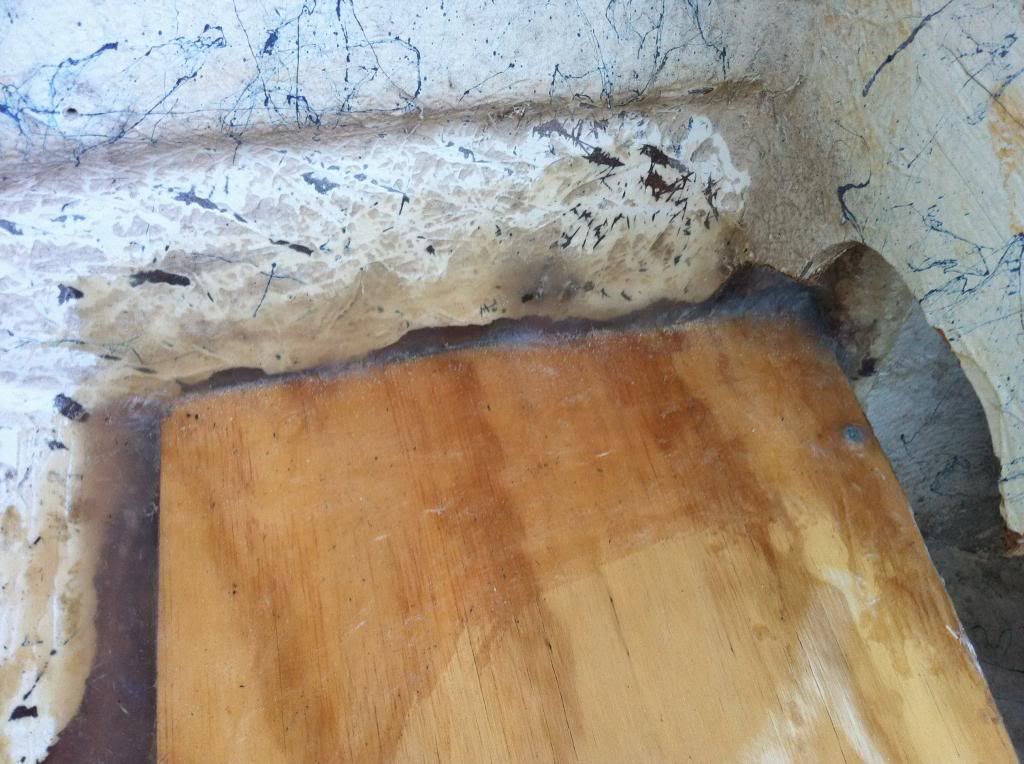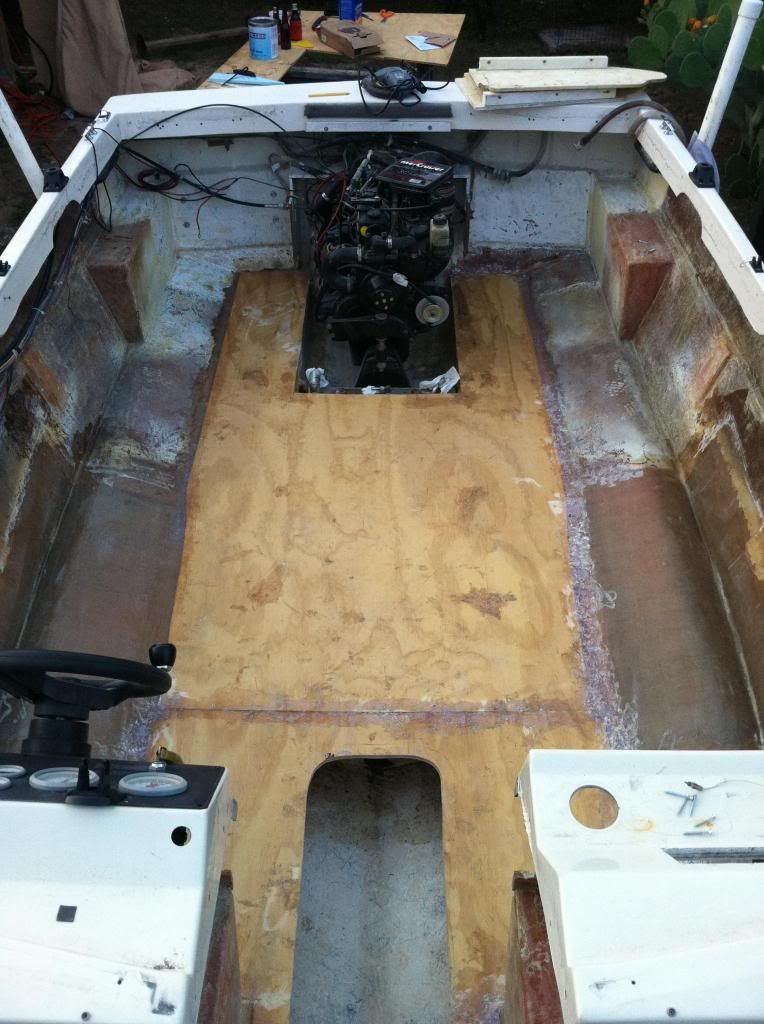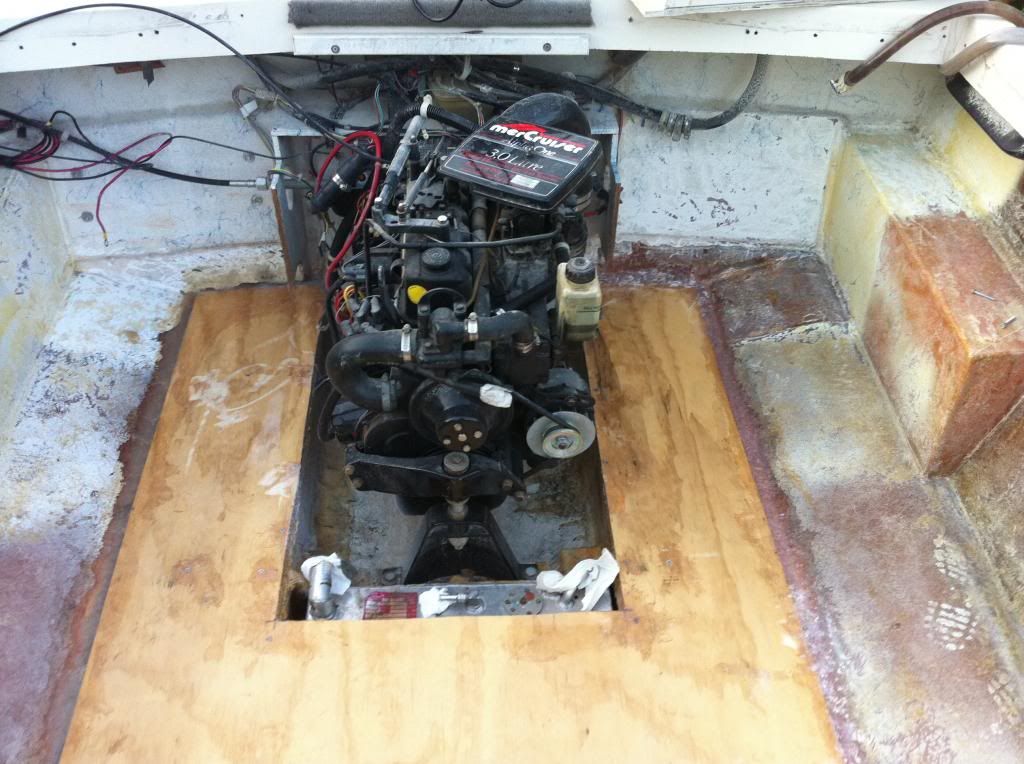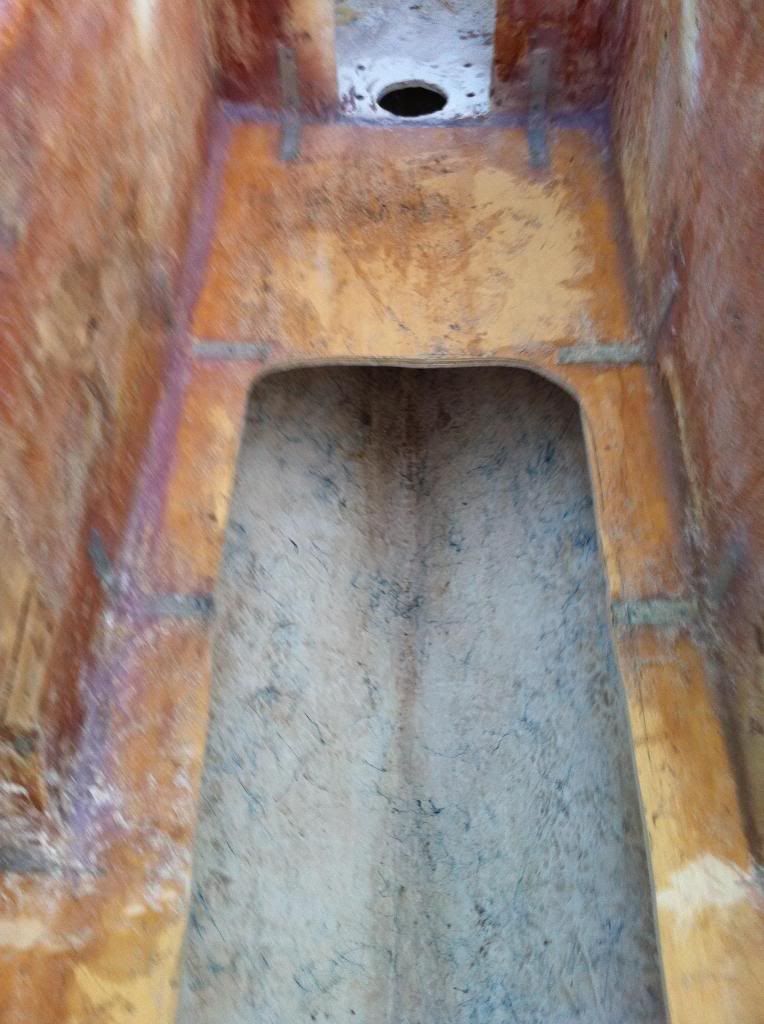**WARNING: LONG READ**
Lots and lots of pics will also be included.
This is an interior rebuild of my 1994 Bayliner Capri Fish & Ski. It's an 18.5' V-hull with a 125 horsepower 3.0L Alpha One I/O.
This rebuild started exactly 1 week after deer season ended in January 2012. I knew I had some soft spots in the floor from the previous fishing season, and I knew the time was coming for some major work on the boat. (From this point forward, I will refer to the floor as the 'deck', as that is what I was told is the correct boaters terminology for it).
The weekend after deer season ended, I went and uncovered my boat and prepared to get her ready for the lake that same day. It had been just sitting all winter long. Well, about the time I set foot inside, my foot just about went through the deck. I immediately dropped the fishing plans and got my tools and went to work.
Once the carpet was up, this is what I was dealing with.
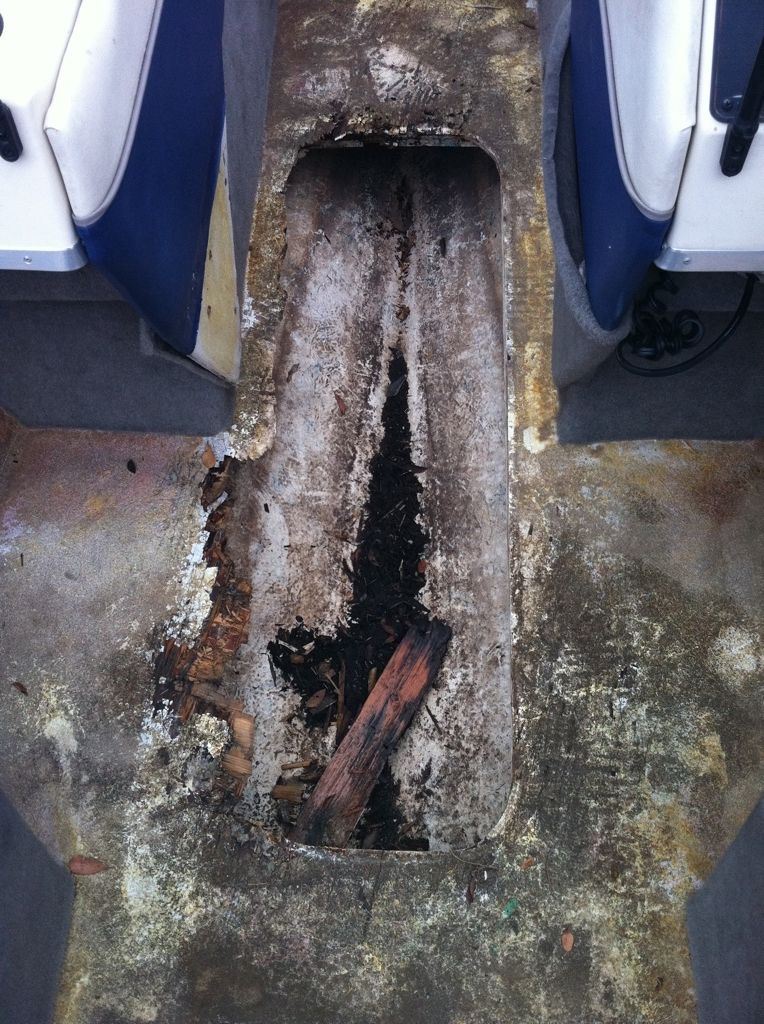
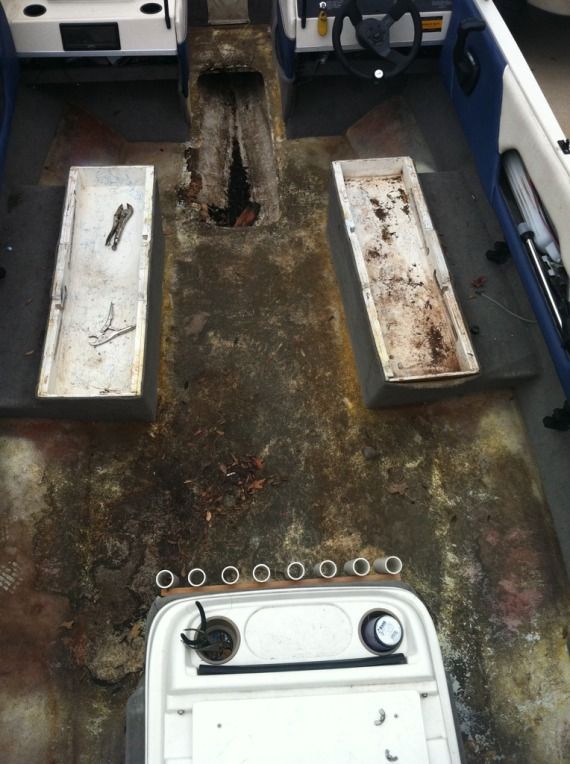
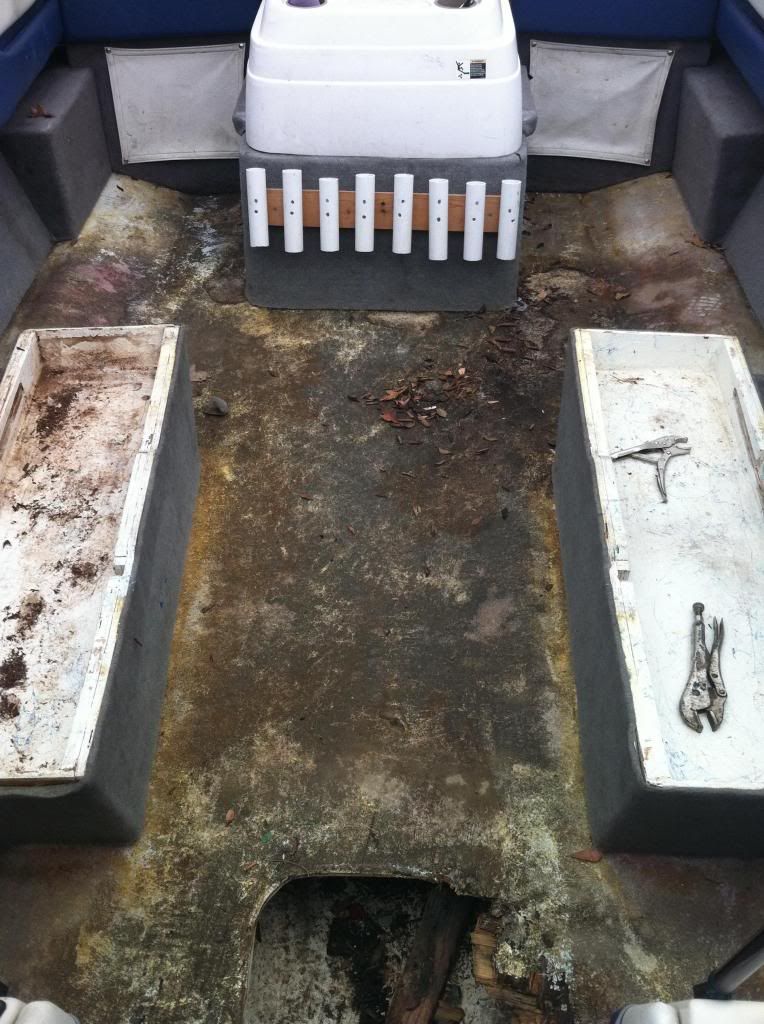
Quite the mess indeed. The carpet just holds all the moisture in. The area around the ski locker was the worst part, and that's where my foot went through. Notice my high tech rod holders.
A few things to note here. As you can see in the pics above, the seats were originally the back to back seating on each side. My plan here is to remove this setup altogether and replace with a single bucket seat on each side. I do not plan to replace the carpet either, for obvious reasons. I will replace it with a roll-on bedliner instead.
Also, going into this project, I really had no idea what I was doing. I have never tackled a project of this sort. I am not a carpenter, and I knew nothing about fiberglassing. But I do like to think of myself as a handyman. There are a lot of things that I like to think I can do fairly well with my hands. Boat rebuild and fiberglass work was just not one of those things. But it was something I was eager to try. I learned as I went, and got LOTS of guidance from various internet postings of folks doing exactly as I am doing here.
A pic of the area under the passenger side console. The dark area is a bit of rot starting to spread, caused my moisture being held into the wood by the carpet.
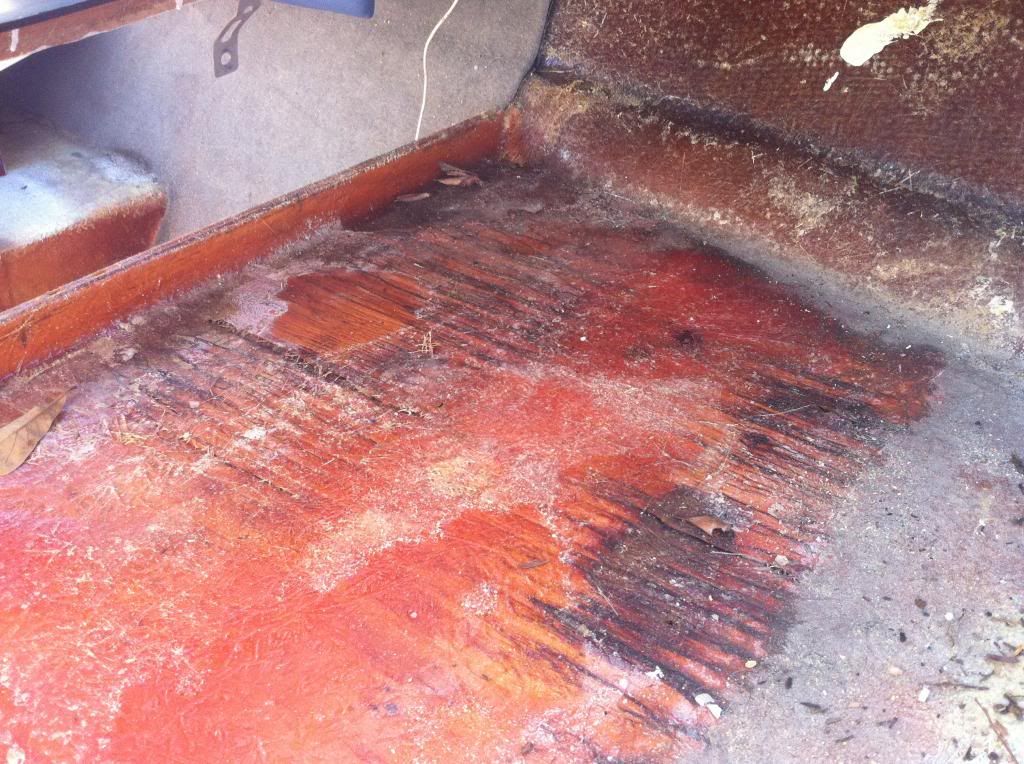
Here is when I actually started doing some cutting. I took a skilsaw and cut right on top the stringers to remove the middle section of the deck. I set the blade shallow such that the blade was just deep enough to cut through the deck, but not into the stringer. FYI, the stringers are the two long wood boards that the deck sits on top of that run the full length of the boat, and the fuel tank sits immediately between them.
The first middle section removed, exposing the fuel tank.

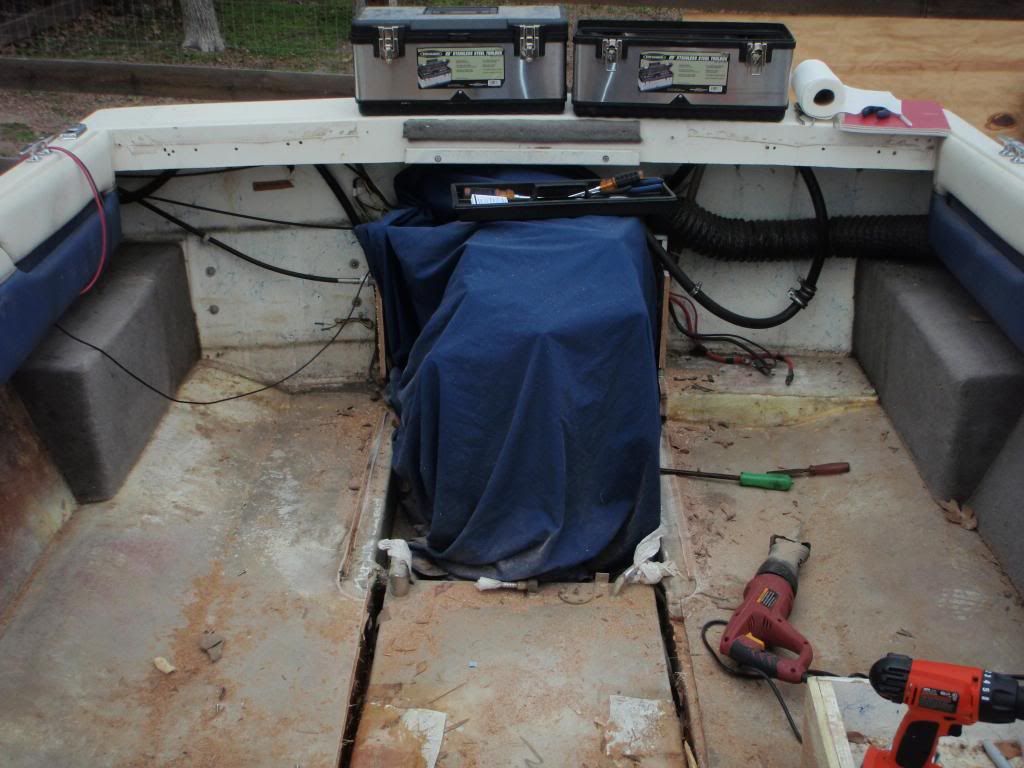
The outsides being removed by use of the crowbar, sawzall and skilsaw.
The engine compartment has also been removed by cutting it off as close to the deck as possible with a sawzall. At this point, I had no idea how I was going to reinstall it when that time came.
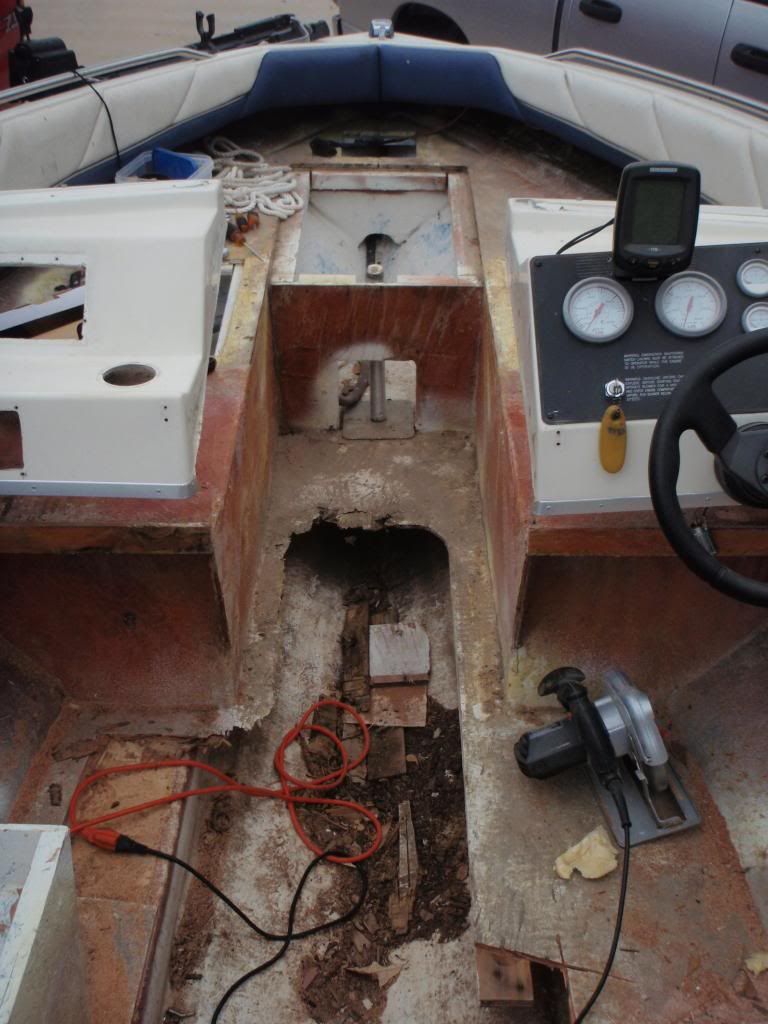
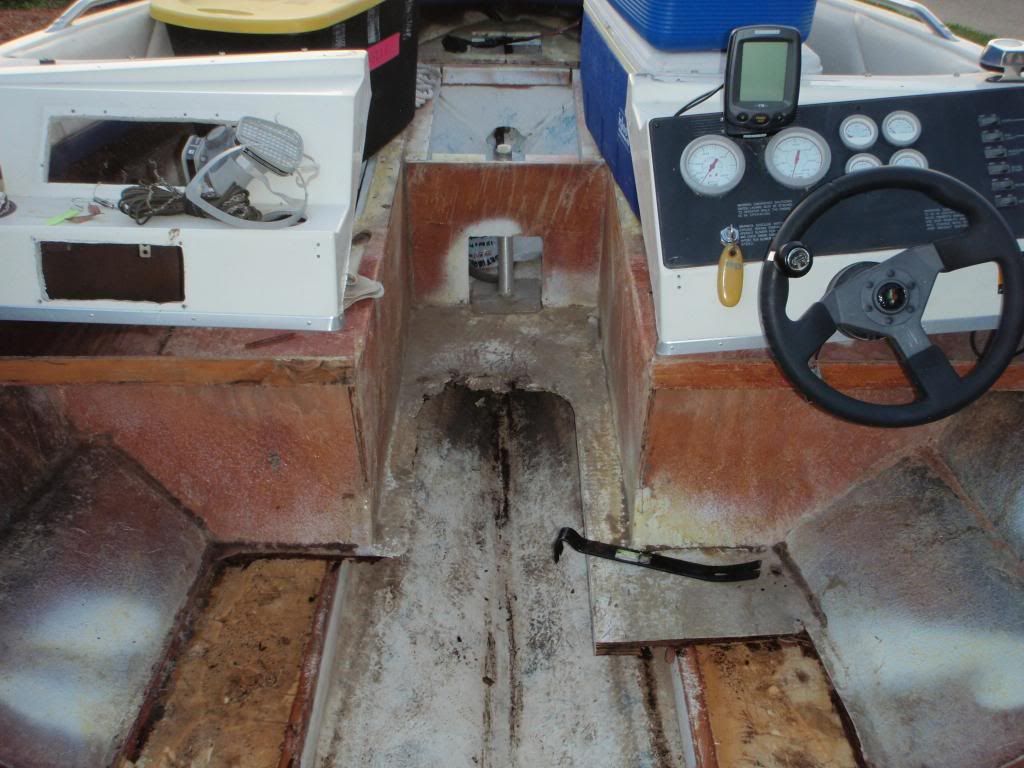
That forward-most compartment is where the livewell was. It was very poorly designed, and a real PITA to deal with. My plan is to remove it completely and utilize that space as storage. Storage space is very limited on this boat. Also, I will use the livewell pump for something else other than a livewell. More on that later on.
More pics to come. I should note here that I am not far from being finished with this project, much farther along that this opening post. I will post more in the coming days.
[This message has been edited by BurrOak (edited 3/26/2013 10:00p).]
Lots and lots of pics will also be included.
This is an interior rebuild of my 1994 Bayliner Capri Fish & Ski. It's an 18.5' V-hull with a 125 horsepower 3.0L Alpha One I/O.
This rebuild started exactly 1 week after deer season ended in January 2012. I knew I had some soft spots in the floor from the previous fishing season, and I knew the time was coming for some major work on the boat. (From this point forward, I will refer to the floor as the 'deck', as that is what I was told is the correct boaters terminology for it).
The weekend after deer season ended, I went and uncovered my boat and prepared to get her ready for the lake that same day. It had been just sitting all winter long. Well, about the time I set foot inside, my foot just about went through the deck. I immediately dropped the fishing plans and got my tools and went to work.
Once the carpet was up, this is what I was dealing with.



Quite the mess indeed. The carpet just holds all the moisture in. The area around the ski locker was the worst part, and that's where my foot went through. Notice my high tech rod holders.
A few things to note here. As you can see in the pics above, the seats were originally the back to back seating on each side. My plan here is to remove this setup altogether and replace with a single bucket seat on each side. I do not plan to replace the carpet either, for obvious reasons. I will replace it with a roll-on bedliner instead.
Also, going into this project, I really had no idea what I was doing. I have never tackled a project of this sort. I am not a carpenter, and I knew nothing about fiberglassing. But I do like to think of myself as a handyman. There are a lot of things that I like to think I can do fairly well with my hands. Boat rebuild and fiberglass work was just not one of those things. But it was something I was eager to try. I learned as I went, and got LOTS of guidance from various internet postings of folks doing exactly as I am doing here.
A pic of the area under the passenger side console. The dark area is a bit of rot starting to spread, caused my moisture being held into the wood by the carpet.

Here is when I actually started doing some cutting. I took a skilsaw and cut right on top the stringers to remove the middle section of the deck. I set the blade shallow such that the blade was just deep enough to cut through the deck, but not into the stringer. FYI, the stringers are the two long wood boards that the deck sits on top of that run the full length of the boat, and the fuel tank sits immediately between them.
The first middle section removed, exposing the fuel tank.


The outsides being removed by use of the crowbar, sawzall and skilsaw.
The engine compartment has also been removed by cutting it off as close to the deck as possible with a sawzall. At this point, I had no idea how I was going to reinstall it when that time came.


That forward-most compartment is where the livewell was. It was very poorly designed, and a real PITA to deal with. My plan is to remove it completely and utilize that space as storage. Storage space is very limited on this boat. Also, I will use the livewell pump for something else other than a livewell. More on that later on.
More pics to come. I should note here that I am not far from being finished with this project, much farther along that this opening post. I will post more in the coming days.
[This message has been edited by BurrOak (edited 3/26/2013 10:00p).]


